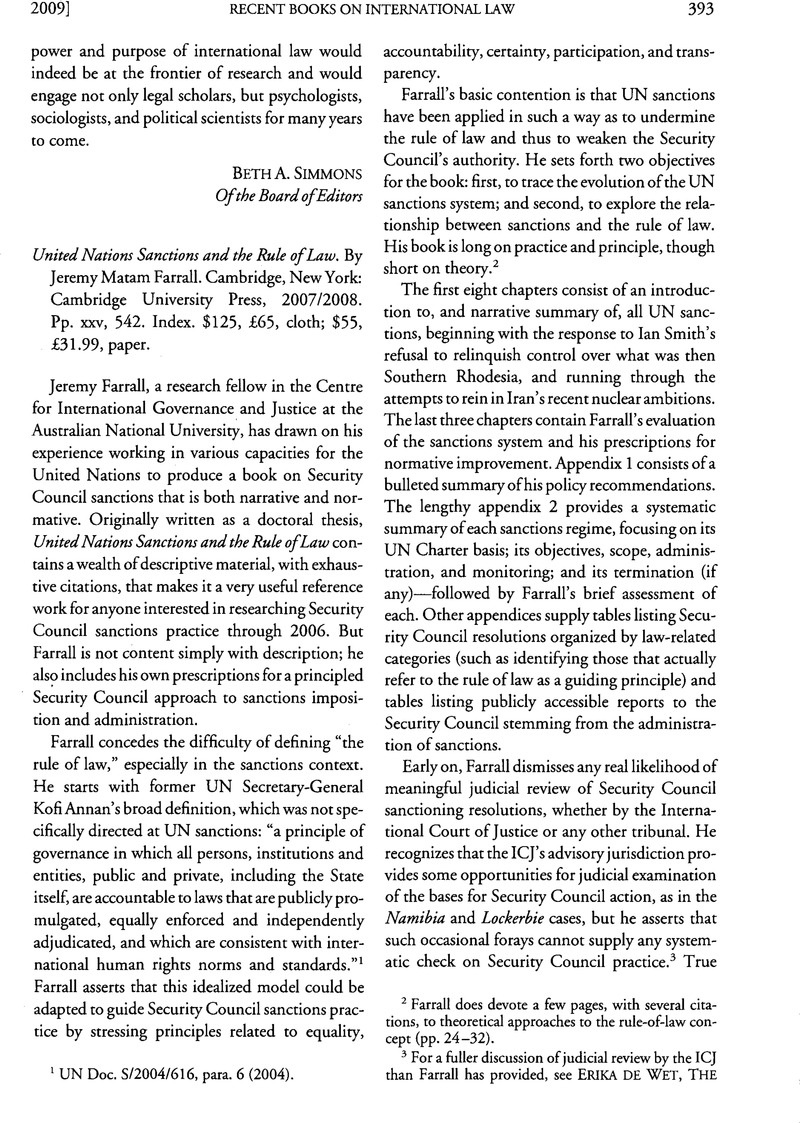No CrossRef data available.
Article contents
United Nations Sanctions and the Rule of Law. By Jeremy Matam Farrall. Cambridge, New York: Cambridge University Press, 2007/2008. Pp.xxv, 542 Index. $125, £65, cloth; $55, £31.99, paper
Published online by Cambridge University Press: 27 February 2017
Abstract

- Type
- Recent Books on International Law
- Information
- Copyright
- Copyright © American Society of International Law 2009
References
1 UN Doc. S/2004/616, para. 6 (2004).
2 Farrall does devote a few pages, with several citations, to theoretical approaches to the rule-of-law concept (pp. 24–32).
3 For a fuller discussion of judicial review by the ICJ than Farrall has provided, see Erika de, Wet, The Chapter VII Powers of the United Nations Security Council 25–129 (2004)Google Scholar.
4 Joined Cases C-402/05 & C-415/05, Kadi v. Council (Eur. Ct. Hum. Rts. Sept. 8, 2008) (a case report by Miša Zgonec-Rožej appears in this issue of the Journal).
5 The other four—consistency, equality, due process, and proportionality—are discussed below.
6 See David, Cortright, George A., Lopez, & Linda, Gerber-Stellingwerf, The Sanctions Era: Themes and Trends in UN Security Council Sanctions Since 1990, in The United Nations Security Council and War: The Evolution of Thought and Practice Since 1945, at 205, 217–18 (Vaughan, Lowe, Adam, Roberts, Jennifer, Welsh, & Dominik, Zaum eds., 2008)Google Scholar.
7 See id. at 213.
8 Statement of Navi Pillay at the Ninth Special Session of the UN Human Rights Council (Jan. 9, 2009), 43 UN L. Rep. 44 (2009).




